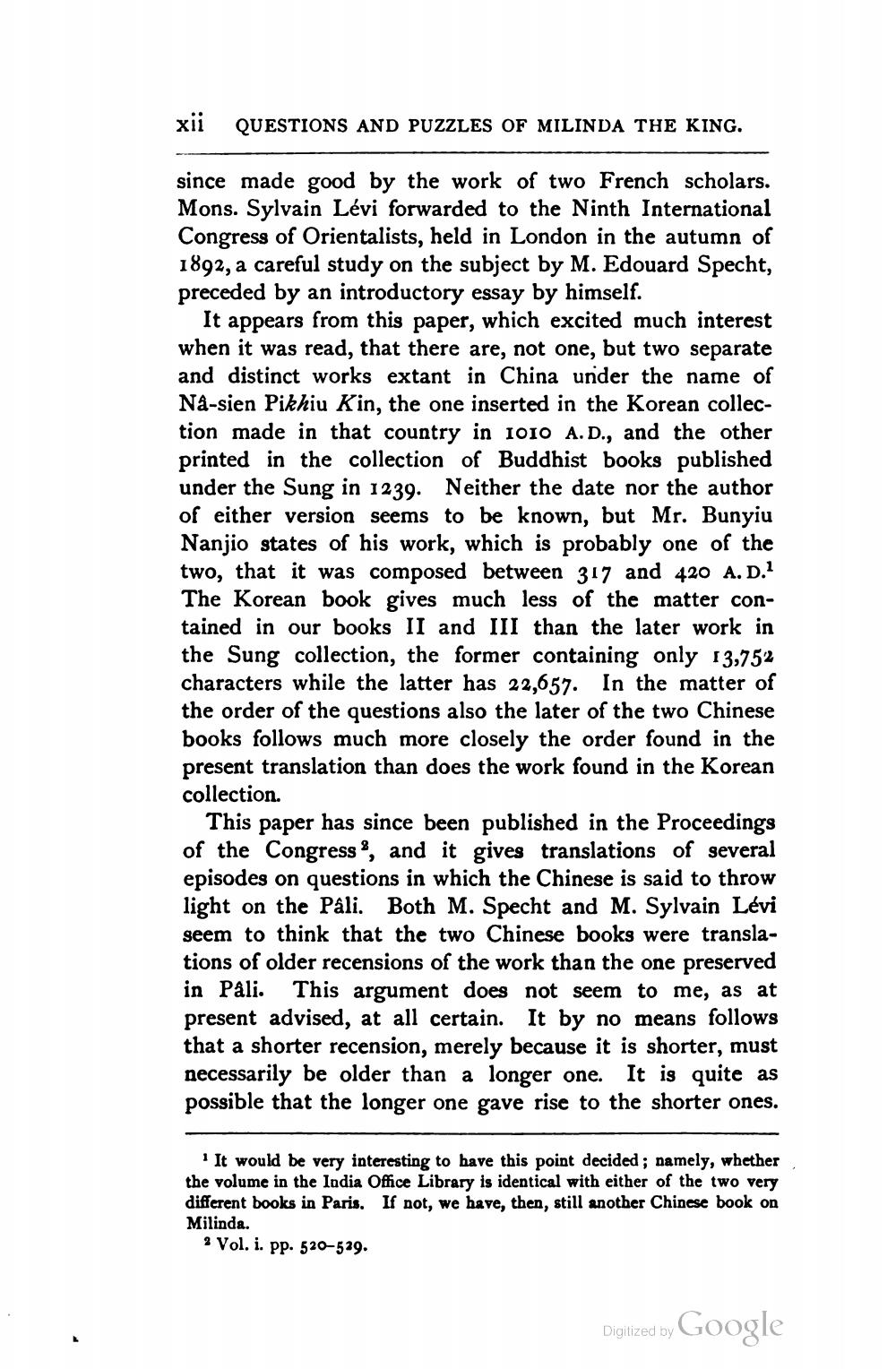________________
xii
QUESTIONS AND PUZZLES OF MILINDA THE KING.
since made good by the work of two French scholars. Mons. Sylvain Lévi forwarded to the Ninth International Congress of Orientalists, held in London in the autumn of 1892, a careful study on the subject by M. Edouard Specht, preceded by an introductory essay by himself.
It appears from this paper, which excited much interest when it was read, that there are, not one, but two separate and distinct works extant in China under the name of Nå-sien Pikhiu Kin, the one inserted in the Korean collection made in that country in 1010 A.D., and the other printed in the collection of Buddhist books published under the Sung in 1239. Neither the date nor the author of either version seems to be known, but Mr. Bunyiu Nanjio states of his work, which is probably one of the two, that it was composed between 317 and 420 A. D.' The Korean book gives much less of the matter contained in our books II and III than the later work in the Sung collection, the former containing only 13,752 characters while the latter has 22,657. In the matter of the order of the questions also the later of the two Chinese books follows much more closely the order found in the present translation than does the work found in the Korean collection.
This paper has since been published in the Proceedings of the Congress, and it gives translations of several episodes on questions in which the Chinese is said to throw light on the Pali. Both M. Specht and M. Sylvain Lévi seem to think that the two Chinese books were translations of older recensions of the work than the one preserved in Påli. This argument does not seem to me, as at present advised, at all certain. It by no means follows that a shorter recension, merely because it is shorter, must necessarily be older than a longer one. It is quite as possible that the longer one gave rise to the shorter ones.
It would be very interesting to have this point decided ; namely, whether the volume in the India Office Library is identical with either of the two very different books in Paris. If not, we have, then, still another Chinese book on Milinda.
2 Vol. i. pp. 520-529.
Digitized by Google




